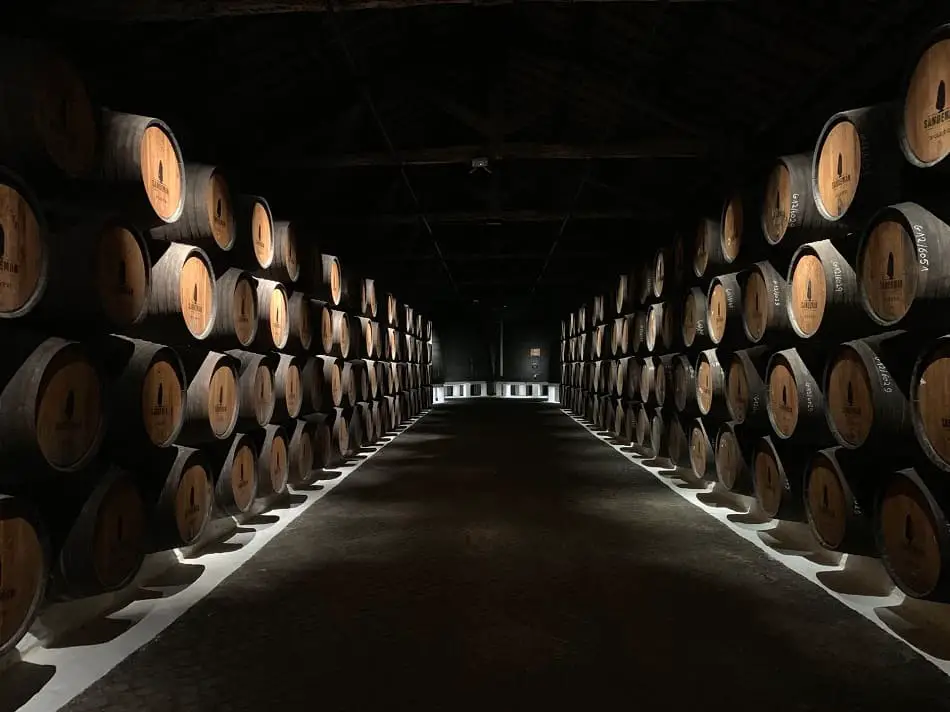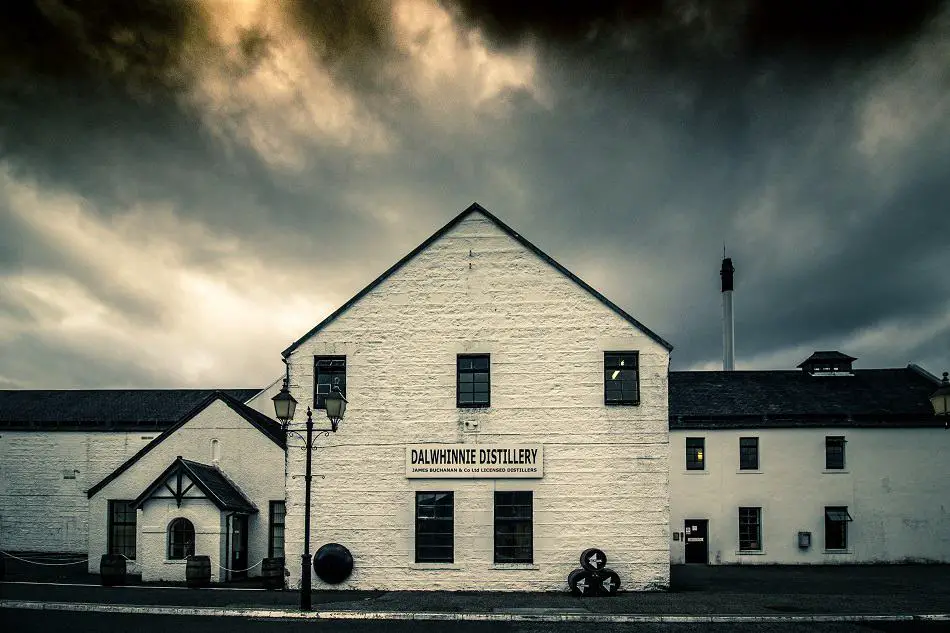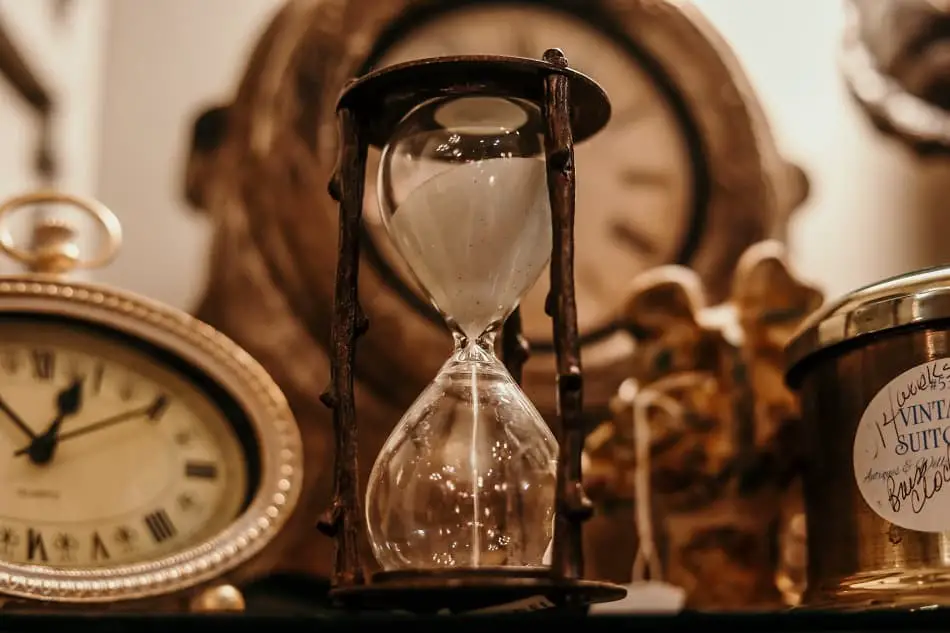Aging is the most important part of the whiskey making process because that’s where a whiskey picks up about 70% of its flavors. But I wanted to know exactly how sitting in a barrel for years or even decades can turn a somewhat unpleasant tasting liquid into a drink that’s full of delicious flavors. I decided to find out exactly how whiskey is aged.
Whiskey is aged by being stored in barrels for years or even decades, so that it can repeatedly seep in and out of the wood and pick up all sorts of flavors from it, in the process. The seeping in and out also filters out some unpleasant notes, while some of the more volatile compounds evaporate through the walls of the barrel.
While this may seem simple enough, there are actually a lot of details that make up each of the three stages to aging whiskey, any one of which can dramatically affect its final flavor.

1. The Distillate Is Poured into the Barrel
The first stage of the aging process is to pour the distillate into the barrel. Not just any type of barrel but one with the following characteristics:
Oak Wood (American or European)
Most whiskeys are aged in barrels made from oak because it’s porous. This lets the spirit soak into the wood and pick up its flavors more easily, and it allows a small amount of air exchange between the inside and the outside of the barrel, which both helps said seeping and lets evaporation occur.
Other types of wood are either too brittle to be made into barrels without breaking, too porous to hold liquid for more than a few months or has sap in the veins which during the coopering process will be exposed and then transferred to the whiskey during aging, negatively affecting its flavor.
And of course, oak wood is used because it contains some great flavors that will be transferred to the whiskey. It has more hemicellulose which is where the sugar, and caramel in whiskey come from.
The most common types of oaks used for aging whiskey are:
- American Oak
- European Oak
- Japanese Mizunara Oak
Most whiskeys are aged in White American Oak barrels because they grow relatively fast so they’re cheaper and because they’re very dense, so they contain a lot of mono galloyl glucose which gives the whiskey soft, vanilla and caramel flavors. Also, the high density causes its tannins to be released more slowly than other oaks, which means whiskey can be aged for longer without becoming too woody.
European Oak barrels are also used frequently and are known for the darker, spicier and slightly bitter flavors they give whiskey.
Mizunara Oak is used less often because it lacks waterproofing oil enzymes, so much more whiskey evaporates from it. When it is used it imparts flavors of vanilla, honey, dried fruits, cloves, sandalwood, coconut and oriental spices.
Toasted or Charred
How the barrels are treated will determine the types of flavors that are imparted during the aging process.
Some barrels are toasted. This is when the barrels are heated slowly and gently so the sugars in the oak do not have enough time to caramelize. Toasted barrels will impart nuttiness, some sweet notes, and light vanilla and toffee flavors. Also, the whiskey will be lighter in color.
Charring barrels is basically setting them on fire to break down parts of the oak. This creates flavor compounds that are soluble in alcohol, allows easier and deeper penetration by the spirit into the wood and creates a charcoal layer that filters out unwanted flavors. Charred barrels impart smoky notes, and flavors of caramel, honey and spice.
Levels 1 – 4 out of seven are the ones most commonly used:
| Level | Seconds | Flavors Imparted |
|---|---|---|
| 1 | 15 | Some oak flavor |
| 2 | 30 | A pronounced sweetness, some of the caramel and vanilla start to show up |
| 3 | 35 | Spicy and earthy flavors, more caramel, toffee, and brown sugar. The spirit will gain a deeper color |
| 4 | 55 | Spicy flavors, vanilla, baked goods, char smoke, dark fruits and leather. The whiskey will have a deep color |
Good Size
The size of a barrel determines the relative level of exposure a spirit has to the wood. In a smaller barrel, a higher percentage of the spirit is touching the wood so the whiskey will age quicker. In a larger barrel, a lower percentage of the spirit is touching the wood so the whiskey will age slower.
Most American whiskey producers use the 53-gallon barrel, which means so do Scotch whisky producers since they age much of their whisky in ex-bourbon barrels. Some distillers use 30-gallon barrels or barrels of an even smaller size to speed up the aging process. Other sizes are used when aging whiskey in casks that previously held another type of spirit, because that’s the size of barrel that type of spirit is usually matured in.
New or Used
Brand new or virgin casks still contain all of their flavors, but the longer a barrel is used to age whiskey the more flavor is extracted, and the less flavor it has left to give the whiskey. A cask still contains a lot of flavors after ten years of aging but after about 15 years it may have lost 50% of its flavors.
Bourbon is aged in new American Oak casks whereas Scotch is aged in used casks (casks are expensive you know). This is one of the reasons why bourbons mature after only two – five years whereas Scotch only matures after at least 10. The newer a cask is, the faster their flavors are transmitted to the whiskey.
Some whiskeys are matured in barrels that previously held other spirits. This is so the flavors of that spirit as well as the wood can be transferred to the whiskey.
Here are some common ex-other spirit casks that are used to age whiskey and some of the flavors they give it:
| Previous Spirit | Flavors Imparted |
|---|---|
| Virgin Oak (no previous spirit) | Vanilla, cloves, caramel |
| Bourbon | Vanilla, sweetness, caramel, cream |
| Oloroso Sherry | Nuts, dark ripe fruits |
| Port (sweet) | Sweet, dried fruit, spiciness |
| Rum (dark) | Sweet, syrup, dark fruits, oak, caramel, vanilla |
2. The Barrel Is Stored in the Right Environment

The second stage of the aging process is to store the barrel in the right environment. This is because, as mentioned, oak wood is porous – which is a good thing otherwise the whiskey wouldn’t be able to enter it and pick up all those flavors, but it also means that elements of the environment are able to get into the barrel. This affects the rate at which the whiskey seeps in and out of the wood and therefore how much flavor it will pick up.
There are several factors that determine the right environment for aging whiskey.
Temperature, Humidity and Seasonal Fluctuations
Warmer temperatures, more humidity and seasonal fluctuations will cause the whiskey to be aged quicker due to the accelerated interaction between spirit, cask, and air. More alcohol will penetrate the wood of the barrels, more flavor will be transferred to the whiskey and more alcohol will evaporate.
Cooler temperatures, lower humidity and fewer seasonal fluctuations will have the opposite effect.
This is another reason why bourbons aging in Kentucky with seasonal fluctuations that include heat in the summer mature relatively quickly, whereas Scotch whiskies aging in the year-round mild temperate climate of Scotland take far longer to mature.
Additionally, whiskey aged in warmer, drier conditions lose more water from the cask and become more alcoholic whereas whiskey aged in cooler, wetter conditions absorb water and become less alcoholic. That’s why bourbons aged in Kentucky usually increase in ABV but whiskies aged in Scotland usually decrease in ABV.
Type of Warehouse Storage
If the barrels are stored in a traditional warehouse (called a dunnage) then they’ll be less affected by the external climate. That’s because they’re smaller, lower in height with thick stone walls and roof, clay floors and no windows. Inside, casks are stacked on their sides, with only enough height for them to be three barrels high.
Being smaller and limited to stacks only three barrels high, makes this type of warehouse less efficient. That’s why modern warehouses are bigger, with room for huge racks on which 15 to 20 casks can be stacked on top of each other. However, they’re made with thinner walls and tin roofs, so the barrels stored inside them are more affected by the external climate.
Even the location inside the warehouse changes how the external climate will affect the barrel because of differences in airflow, temperature and humidity.
That’s not one thing to consider but many, including:
- The side of the building
- The floor / height
- The specific row
- How often the barrels are rotated if at all
- Whether the barrels are stored upright
That’s why some distilleries regulate every detail of their warehouse, from the location of the building (on a hilltop or in a valley, in the city or in the countryside), to how much direct sunlight it receives, the materials used for construction, to the exterior paint color of the building. That way they can micromanage as much of the aging process as possible.
Geographical Location
Obviously different geographical locations will have different temperatures, humidity and seasonal fluctuations but they may also have other natural environmental characteristics which can affect the whiskey as it’s being aged.
The most obvious example of this occurs with distilleries that are located near the sea. Their whiskeys absorb some of the briny sea air and salt as they’re aged which gives them a coastal, maritime character.
Some brands with distilleries located far from the sea, send their whiskeys to age onboard ships so they can be exposed to the salty ocean air.
3. The Whiskey Is Left for the Right Amount of Time

The third stage of the aging process is to age the whiskey for the right amount of time. That means long enough to become fully mature but not too long that it causes certain problems.
Long enough means as mentioned earlier, 2-5 years for bourbon and at least 10 years for Scotch. Of course, if left to age for longer it will taste even better which is why you can find many whiskeys that are 12, 15, 18, 21 or more years old.
Sometimes a whiskey can be aged for too long. This sounds counter-intuitive when we know that the longer a whiskey is in the barrel the more flavors it will pick up, but under some circumstances being aged for too long can cause the following problems:
The Whiskey Can Become Over Oaked
Whiskey can become over oaked. This is when whiskey takes too much flavor from the wood and tastes too woody and bitter. This can happen with some whiskeys that have been aged for longer than 18 years.
They’re still produced, though more for the collector’s value than for drinking.
Too Much Whiskey Will Evaporate
Depending on the size of the barrel, the type of warehouse, and the climate the barrel is stored in, anywhere from 2% – 10% of the whiskey evaporates from the barrel each year. During the entire aging process, a barrel could lose 30% – 40% of its whiskey to evaporation.
This means that you can’t age whiskey indefinitely, because eventually, with part of it continuously evaporating, you’ll have very little whiskey left.
Also, since alcohol evaporates at a slower rate than water, the alcohol to water ratio is constantly increasing and at some stage the whiskey will become too alcoholic.
It’s Not Worthwhile
There comes a time when the amount a whiskey would improve with further aging would not be enough to make it worthwhile. This is because as time goes on it takes longer and longer to extract the remaining flavors.
That’s why older whiskeys are not simply more expensive than younger ones, they’re exponentially more expensive. At some stage the small amount of improvement will not be worth the significant increase in cost necessary to produce it and price necessary to pay to drink it.
That’s why distilleries need to determine the optimum age range for their whiskeys. Of course, it will vary depending on all the factors mentioned above but in general it’s been found that:
- The optimum age range for bourbon is between 5 – 10 years
- The optimum age range for Scotch is between 15 – 30 years

